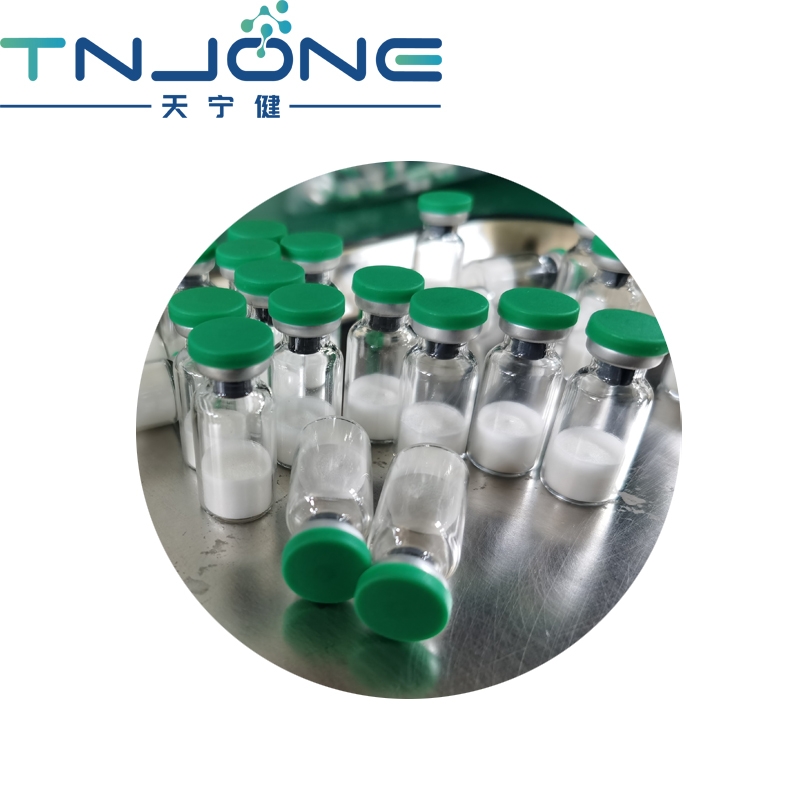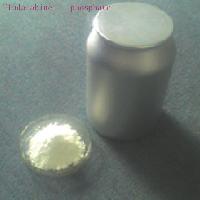-
Categories
-
Pharmaceutical Intermediates
-
Active Pharmaceutical Ingredients
-
Food Additives
- Industrial Coatings
- Agrochemicals
- Dyes and Pigments
- Surfactant
- Flavors and Fragrances
- Chemical Reagents
- Catalyst and Auxiliary
- Natural Products
- Inorganic Chemistry
-
Organic Chemistry
-
Biochemical Engineering
- Analytical Chemistry
-
Cosmetic Ingredient
- Water Treatment Chemical
-
Pharmaceutical Intermediates
Promotion
ECHEMI Mall
Wholesale
Weekly Price
Exhibition
News
-
Trade Service
▎ WuXi AppTec content team editors.
Among patients diagnosed with non-small cell lung cancer (NSCLC), about 50% have local (stage I and II) or locally advanced (stage III) diseases
.
Radical surgery is the preferred treatment for stage I-II and some stage IIIA NSCLC
.
However, the 5-year survival rate of these early-stage NSCLC patients is significantly different, with 92% for stage IA patients and only 36% for stage IIIA patients
.
This suggests that there are still micrometastases in the patient who need treatment
.
At present, for patients with early stage NSCLC (stage IB [tumor≥4 cm] to stage IIIA), platinum-containing combined chemotherapy is the standard of adjuvant treatment after complete resection, but it has a limited improvement in survival (4%-5%)
.
ADAURA research shows that adjuvant treatment with osimertinib can bring cancer-free survival benefits for early-stage NSCLC patients with EGFR mutations
.
For most early NSCLC patients with wild-type EGFR, there is still an urgent need for new adjuvant strategies
.
Immunotherapy has become one of the cornerstones of the first-line treatment of advanced NSCLC.
Can such drugs also benefit early patients? Recently, the research results of IMpower010 were published in The Lancet
.
For patients with stage II-IIIA NSCLC undergoing surgical resection, continued PD-L1 inhibitor atezolizumab treatment after adjuvant chemotherapy can significantly prolong cancer-free survival, recurrence or death compared with the best supportive treatment The risk was reduced by 21%.
Patients with PD-L1 expression ≥1% benefited more, and the risk of recurrence or death was reduced by 34%
.
Screenshot source: The Lancet paper pointed out that this is "the first phase 3 research data from the IB-IIIA phase of NSCLC adjuvant immunotherapy
.
" The "Lancet" concurrent review article pointed out that "IMpower010 represents an important milestone in thoracic oncology.
.
these findings have for patients with resectable NSCLC importance
.
"in June, the preliminary study will be presented at the American Society of clinical Oncology (ASCO), at that time, ASCO chief Medical officer Dr.
Julie R.
Gralow said," this This is the first time we have seen that immunotherapy is effective for the treatment of early-stage lung cancer
.
Whether it is our understanding of immunotherapy, or for many lung cancer patients, this may be an important advancement
.
"Image source: 123RFIMpower010 is an item A randomized, multi-center, open-label, phase 3 study, carried out in 227 clinical centers in 22 countries and regions around the world
.
A total of 1280 patients with stage IB (tumor ≥4 cm) to stage IIIA NSCLC were enrolled after complete resection.
In the end, 1005 patients were randomized 1:1 after adjuvant chemotherapy to receive atilizumab adjuvant therapy (n=507) Or the best supportive treatment (n=498)
.
A total of 495 people in each group actually received treatment
.
The primary endpoint of the study is disease-free survival (DFS)
.
After a median follow-up of 32.
2 months for the Phase II-IIIA population, compared with the best supportive treatment, atilizumab significantly prolonged disease-free survival
.
Stage II-IIIA patients with PD-L1 expression ≥1%: The risk of disease progression or death is reduced by 34% (stratified HR 0.
66), and the 3-year disease-free survival rate is higher (60% vs 48%)
.
All patients with stage II-IIIA: the risk of disease progression or death is reduced by 21% (stratified HR 0.
79), and the 3-year disease-free survival rate is higher (56% vs 49%)
.
All intent-to-treat population (stage IB-IIIA): the risk of disease progression or death was reduced by 19% (stratified HR 0.
81), and the 3-year disease-free survival rate was higher (58% vs 53%)
.
Stage II-IIIA patients with PD-L1 expression ≥50%: Preliminary data show that the risk of death is reduced by 57% (unstratified HR 0.
43)
.
▲In patients with stage II-IIIA NSCLC with PD-L1 expression ≥1%, the disease-free survival rate of atilizumab and the best supportive treatment group (picture source: reference [1]) in exploratory analysis, in Among patients with stage II-IIIA, the cancer-free survival advantage of atilizumab can be generally seen in most patient subgroups
.
As of the analysis, the 5-year disease-free survival rate and overall survival data are still accumulating, and a longer follow-up is needed to further show the survival benefit of atilizumab adjuvant therapy
.
However, in view of the positive data on the main outcome and the fact that the study did not observe new safety signals, the paper pointed out that this suggests that for patients with stage II-IIIA NSCLC who have been resected, atilizumab treatment after adjuvant chemotherapy may be a problem.
A potential treatment option that can prolong the cancer-free survival of patients, especially in patients with tumor cell PD-L1 expression ≥1%, especially in patients with PD-L1 expression ≥50%
.
In the "Lancet" review article, Dr.
Justin F Gainor of Massachusetts General Hospital (MGH) also pointed out that research data from locally advanced, unresectable NSCLC suggests that prolonged disease control may be a clinically significant alternative to overall survival Indicators
.
There is an urgent need to more clearly identify the patients most likely to benefit from it
.
IMpower010 data shows that although patients with PD-L1 expression ≥1% benefit, the improvement in disease-free survival seems to be mainly driven by patients with PD-L1 ≥50%, although the results of this exploratory analysis need to be interpreted with caution.
But this is consistent with research findings in advanced disease
.
The review article further looked forward and stated, “The IMpower010 study represents an important step forward
.
In the near future, as other immunotherapies are published in adjuvant and neoadjuvant therapy, the prospects for the treatment of resectable NSCLC may be improved.
More complicated
.
The success of PD-L1 inhibitors in adjuvant treatment of NSCLC patients laid the foundation for the continued expansion of immune checkpoint inhibitors in adjuvant treatment of different diseases in the next decade
.
"
Among patients diagnosed with non-small cell lung cancer (NSCLC), about 50% have local (stage I and II) or locally advanced (stage III) diseases
.
Radical surgery is the preferred treatment for stage I-II and some stage IIIA NSCLC
.
However, the 5-year survival rate of these early-stage NSCLC patients is significantly different, with 92% for stage IA patients and only 36% for stage IIIA patients
.
This suggests that there are still micrometastases in the patient who need treatment
.
At present, for patients with early stage NSCLC (stage IB [tumor≥4 cm] to stage IIIA), platinum-containing combined chemotherapy is the standard of adjuvant treatment after complete resection, but it has a limited improvement in survival (4%-5%)
.
ADAURA research shows that adjuvant treatment with osimertinib can bring cancer-free survival benefits for early-stage NSCLC patients with EGFR mutations
.
For most early NSCLC patients with wild-type EGFR, there is still an urgent need for new adjuvant strategies
.
Immunotherapy has become one of the cornerstones of the first-line treatment of advanced NSCLC.
Can such drugs also benefit early patients? Recently, the research results of IMpower010 were published in The Lancet
.
For patients with stage II-IIIA NSCLC undergoing surgical resection, continued PD-L1 inhibitor atezolizumab treatment after adjuvant chemotherapy can significantly prolong cancer-free survival, recurrence or death compared with the best supportive treatment The risk was reduced by 21%.
Patients with PD-L1 expression ≥1% benefited more, and the risk of recurrence or death was reduced by 34%
.
Screenshot source: The Lancet paper pointed out that this is "the first phase 3 research data from the IB-IIIA phase of NSCLC adjuvant immunotherapy
.
" The "Lancet" concurrent review article pointed out that "IMpower010 represents an important milestone in thoracic oncology.
.
these findings have for patients with resectable NSCLC importance
.
"in June, the preliminary study will be presented at the American Society of clinical Oncology (ASCO), at that time, ASCO chief Medical officer Dr.
Julie R.
Gralow said," this This is the first time we have seen that immunotherapy is effective for the treatment of early-stage lung cancer
.
Whether it is our understanding of immunotherapy, or for many lung cancer patients, this may be an important advancement
.
"Image source: 123RFIMpower010 is an item A randomized, multi-center, open-label, phase 3 study, carried out in 227 clinical centers in 22 countries and regions around the world
.
A total of 1280 patients with stage IB (tumor ≥4 cm) to stage IIIA NSCLC were enrolled after complete resection.
In the end, 1005 patients were randomized 1:1 after adjuvant chemotherapy to receive atilizumab adjuvant therapy (n=507) Or the best supportive treatment (n=498)
.
A total of 495 people in each group actually received treatment
.
The primary endpoint of the study is disease-free survival (DFS)
.
After a median follow-up of 32.
2 months for the Phase II-IIIA population, compared with the best supportive treatment, atilizumab significantly prolonged disease-free survival
.
Stage II-IIIA patients with PD-L1 expression ≥1%: The risk of disease progression or death is reduced by 34% (stratified HR 0.
66), and the 3-year disease-free survival rate is higher (60% vs 48%)
.
All patients with stage II-IIIA: the risk of disease progression or death is reduced by 21% (stratified HR 0.
79), and the 3-year disease-free survival rate is higher (56% vs 49%)
.
All intent-to-treat population (stage IB-IIIA): the risk of disease progression or death was reduced by 19% (stratified HR 0.
81), and the 3-year disease-free survival rate was higher (58% vs 53%)
.
Stage II-IIIA patients with PD-L1 expression ≥50%: Preliminary data show that the risk of death is reduced by 57% (unstratified HR 0.
43)
.
▲In patients with stage II-IIIA NSCLC with PD-L1 expression ≥1%, the disease-free survival rate of atilizumab and the best supportive treatment group (picture source: reference [1]) in exploratory analysis, in Among patients with stage II-IIIA, the cancer-free survival advantage of atilizumab can be generally seen in most patient subgroups
.
As of the analysis, the 5-year disease-free survival rate and overall survival data are still accumulating, and a longer follow-up is needed to further show the survival benefit of atilizumab adjuvant therapy
.
However, in view of the positive data on the main outcome and the fact that the study did not observe new safety signals, the paper pointed out that this suggests that for patients with stage II-IIIA NSCLC who have been resected, atilizumab treatment after adjuvant chemotherapy may be a problem.
A potential treatment option that can prolong the cancer-free survival of patients, especially in patients with tumor cell PD-L1 expression ≥1%, especially in patients with PD-L1 expression ≥50%
.
In the "Lancet" review article, Dr.
Justin F Gainor of Massachusetts General Hospital (MGH) also pointed out that research data from locally advanced, unresectable NSCLC suggests that prolonged disease control may be a clinically significant alternative to overall survival Indicators
.
There is an urgent need to more clearly identify the patients most likely to benefit from it
.
IMpower010 data shows that although patients with PD-L1 expression ≥1% benefit, the improvement in disease-free survival seems to be mainly driven by patients with PD-L1 ≥50%, although the results of this exploratory analysis need to be interpreted with caution.
But this is consistent with research findings in advanced disease
.
The review article further looked forward and stated, “The IMpower010 study represents an important step forward
.
In the near future, as other immunotherapies are published in adjuvant and neoadjuvant therapy, the prospects for the treatment of resectable NSCLC may be improved.
More complicated
.
The success of PD-L1 inhibitors in adjuvant treatment of NSCLC patients laid the foundation for the continued expansion of immune checkpoint inhibitors in adjuvant treatment of different diseases in the next decade
.
"







